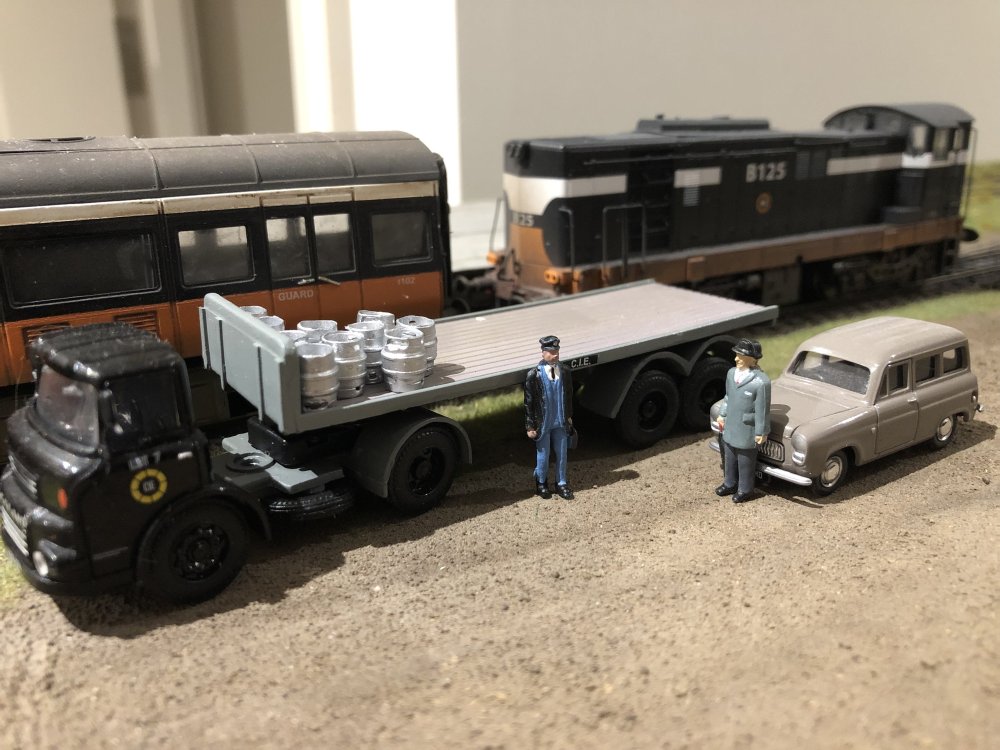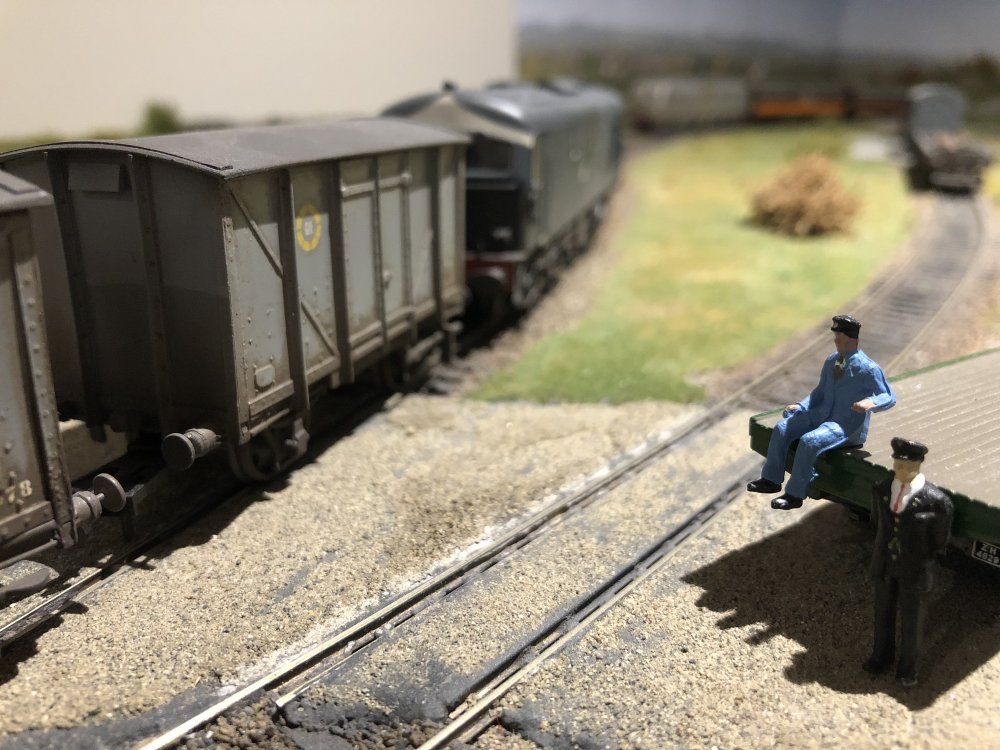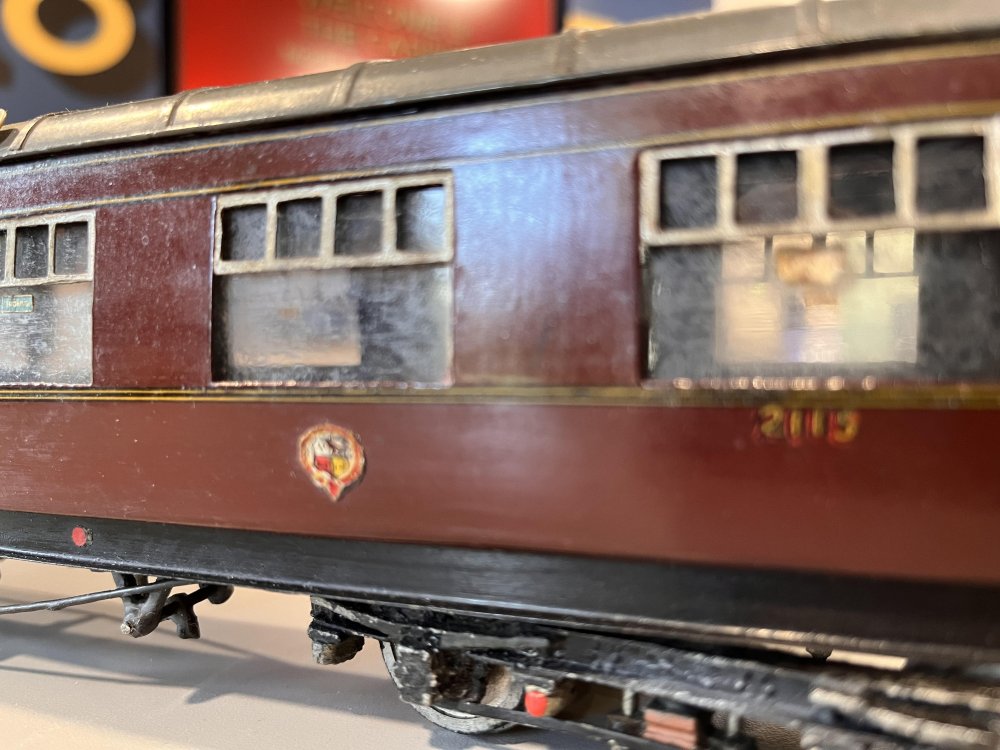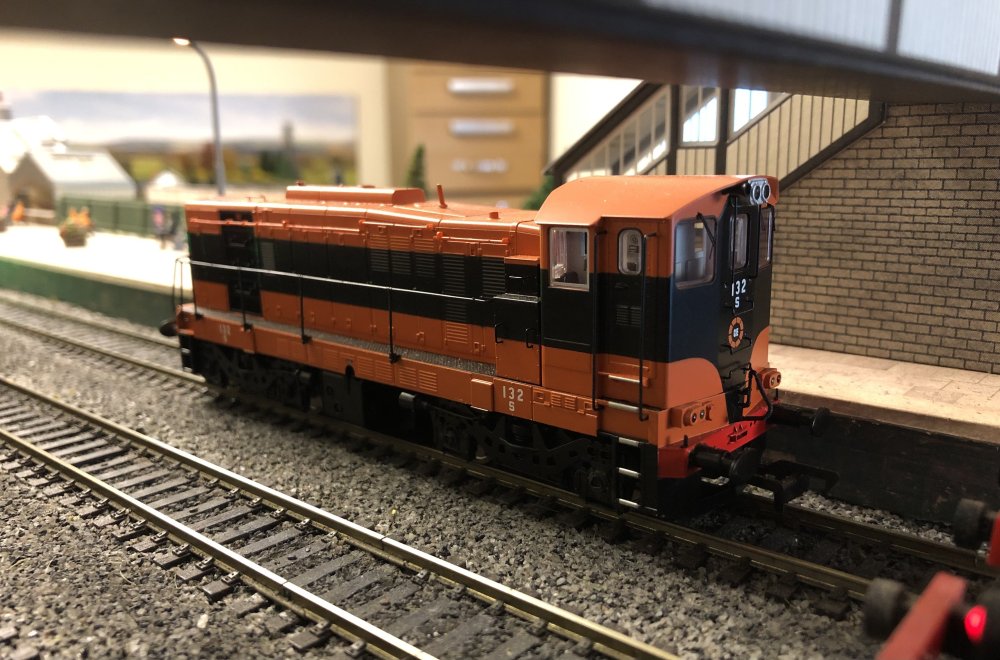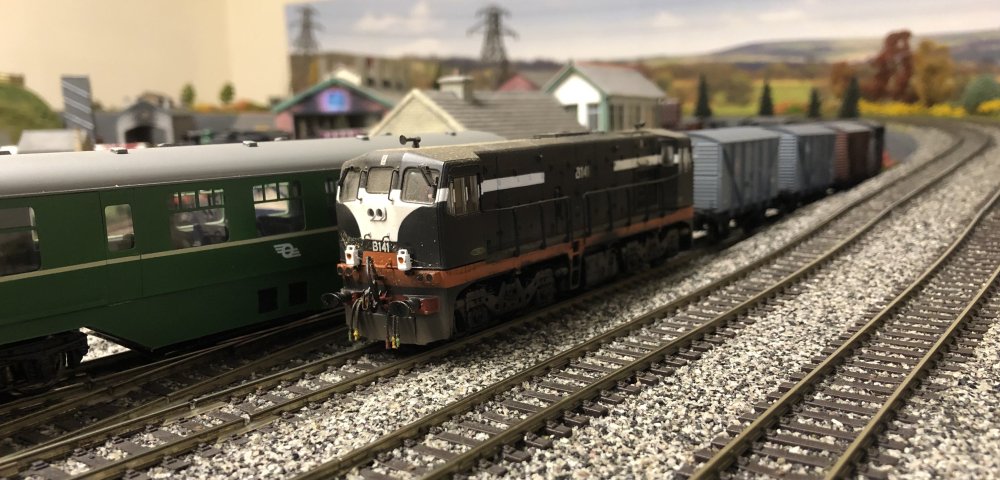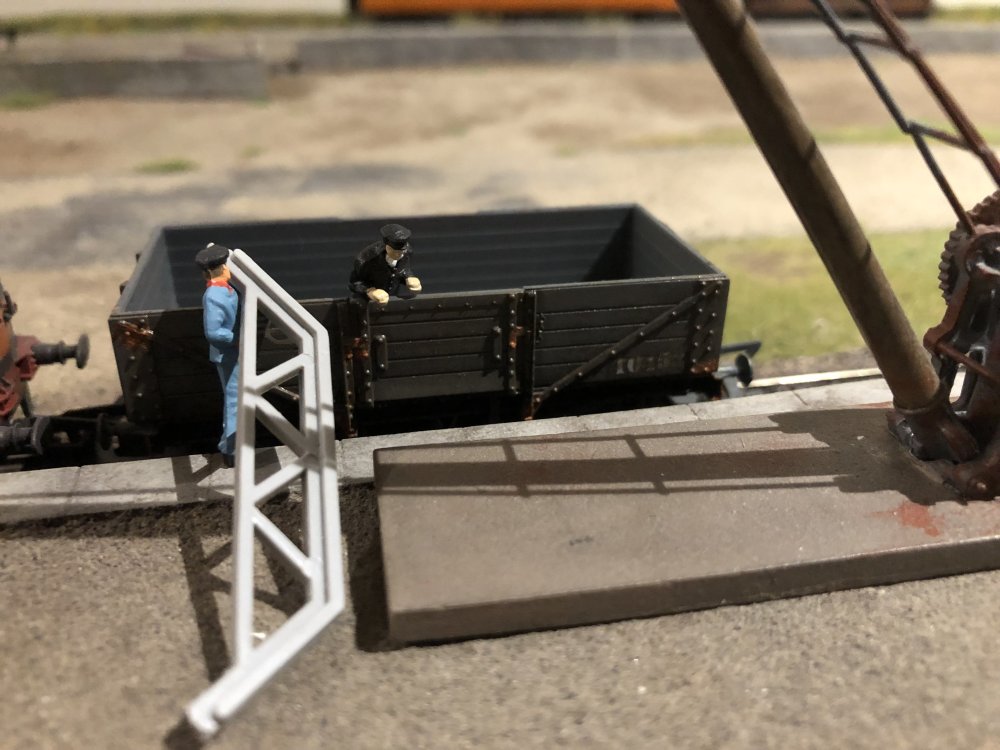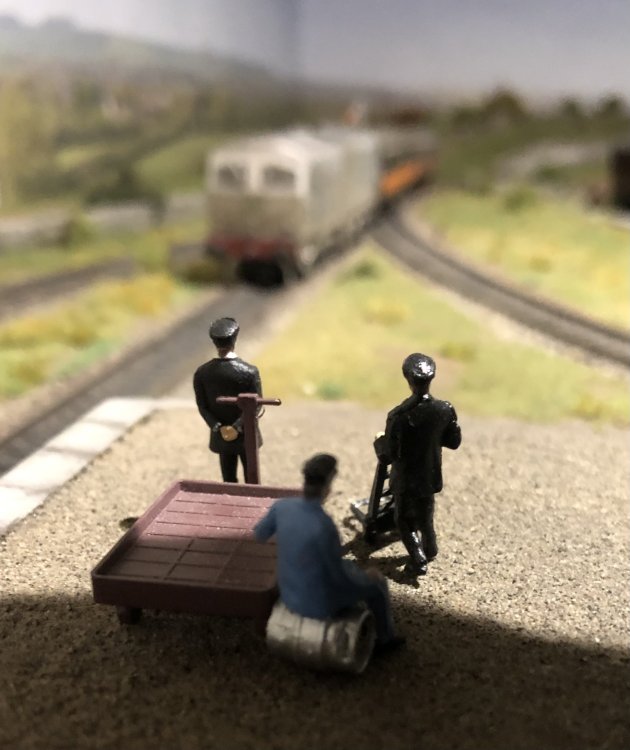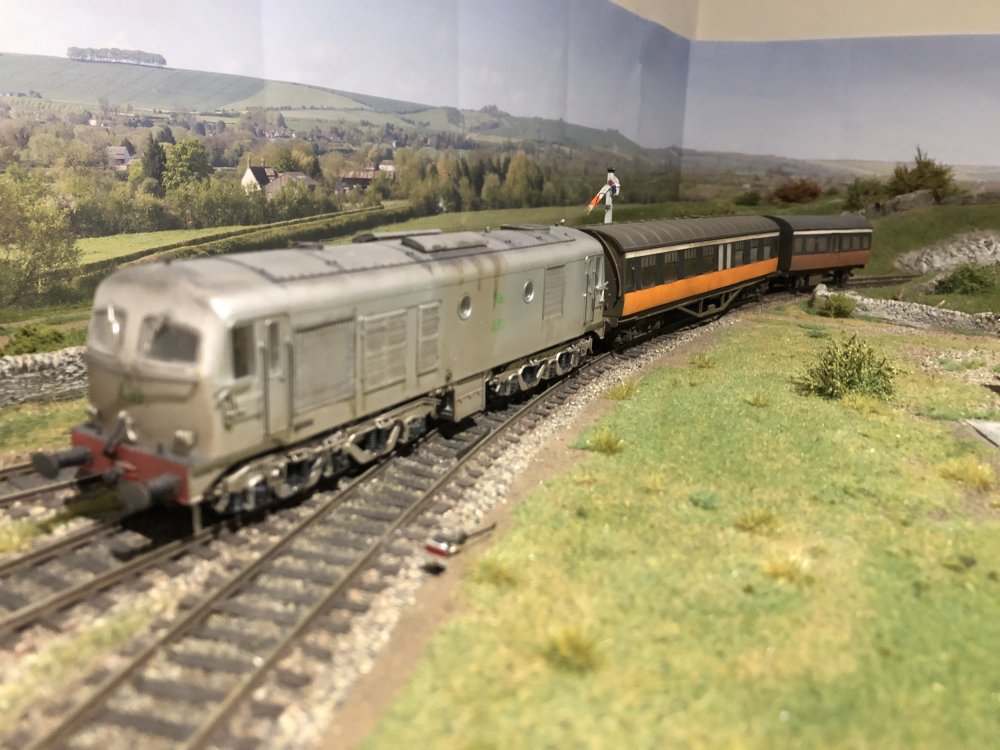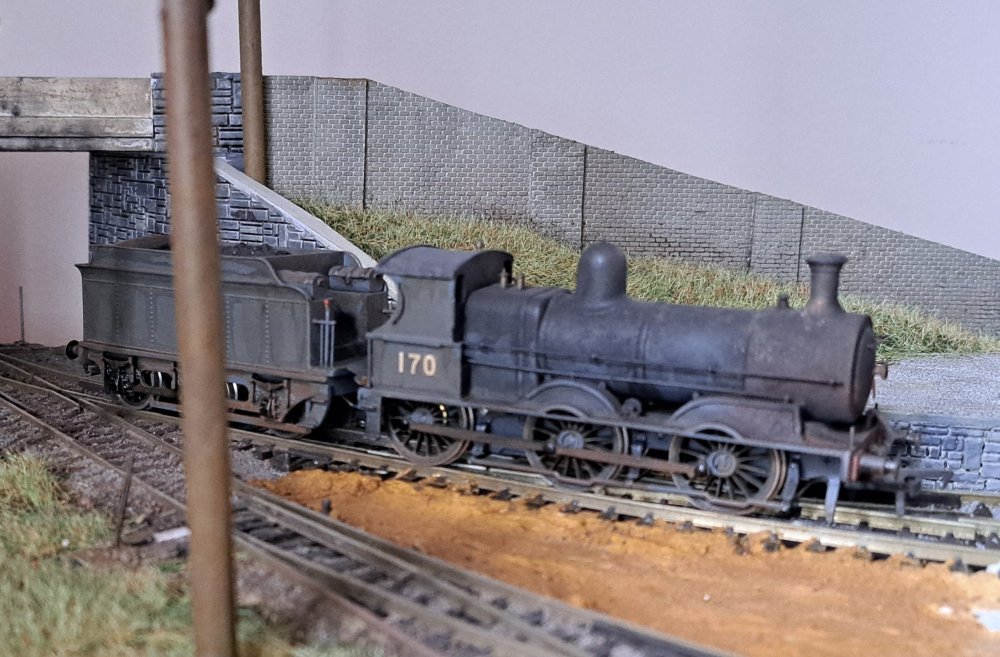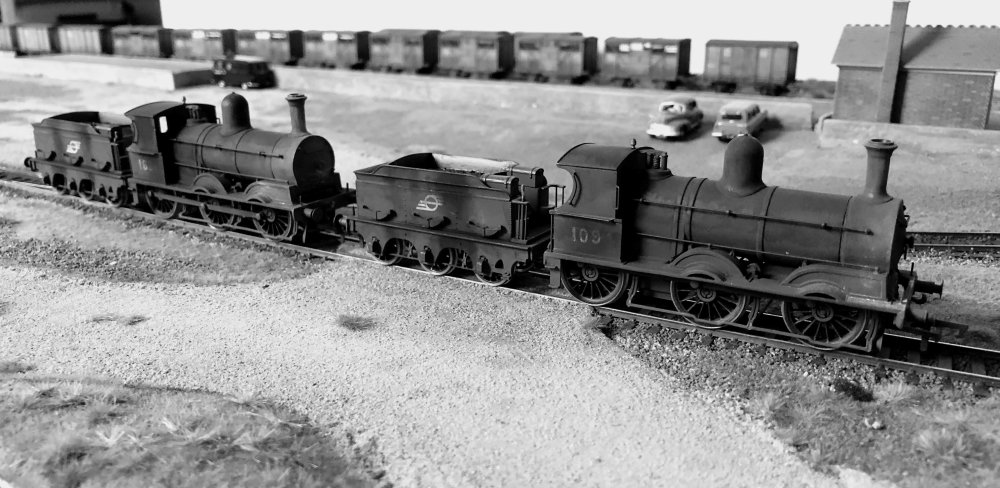-
Posts
15,873 -
Joined
-
Last visited
-
Days Won
393
Content Type
Profiles
Forums
Events
Gallery
Everything posted by jhb171achill
-
There were differences in chassis and bogies, yes. Mayner’s post above pretty much summarises it, but when I post a few pics that should help too. The earlier (up to 1953) CIE stock had basically the same type of chassis and bogies as Bredins; later ones had bogies more like those in Park Royals. The chassis looked different too, though I would not be well up on the actual specification.
-
The GSR-built stock were all several varieties of “Bredins”, with two distinct side profiles, the earlier ones being straighter sides. There was nothing built in the 1940s, so the 800s and so on were hauling trains of “modern” Bredins plus older wooden stock (of low and high roof types, plus an occasional clerestorey, and even the odd six-wheeled full brake). The CIE stock built in 1951-3 was broadly similar to the Bredins, but solid timber frames rather than laminated. Then came the Park Royals in 1955/6, followed by the ACTUAL laminates, in their several batches and configurations, and the 24XX series dining cars. All of the above bar the Park Royals bore the same overall family resemblance to the Bredins. Later, many of the 1951-3 wooden-framed vehicles were rebuilt, for example as BSGSVs. Even among enthusiasts, everything of that era tends also to be referred to generically as “laminates”, even though the framework of the bodies was solid timber rather than laminated; but of course you can’t tell that externally! I’ll post a few pics later of different types.
-
Now THERE’s an idea!
-
“....Well, it went to court in Killarney. He was awarded fifty pounds, which isn’t bad…. away and stick the kettle on an’ then we’ll deliver these.….”
-
“You should’ve seen his face. Haunted, we told him. He went back to Castletown and told Mick he didn’t want to come down here agin… he’s on the Tralee goods ever since…”
-
Here’s another. Lighting shows it more accurately here - looks a bit brownish in the first shot. This is of course one of Cyril Fry’s models, a Bredin coach.
-
Just gauging interest! If they DO go ahead with this, it will be several years before they're ready. If they want more than one livery in a re-run, I've sent them GSWR, early GSR and late GSR. Late GSR (post-1933) would probably be the most popular. This is GSR livery as seen after the early 1930s....
-
-
Absolutely outstanding stuff!
-
That is absolutely awful. Hope the fund raiser goes well - folks, let's all donate!
-
Superb stuff and a lovely tribute. Your dad would be very proud of that.
- 11 replies
-
- 4
-

-

-
What Scale Do You Model Irish Railways In?
jhb171achill replied to DJ Dangerous's topic in General Chat
12” to the foot scale? -
“We’ll have to just manhandle it in. No wonder the crane’s seized - PJ says he never saw anyone oil it at all, and he’s here since 1944…” “Not too many of them still in silver….gets very dirty, doesn’t it….” ”That’s Pat driving today. It’ll be a lively run back….. his da still isn’t well, y’know….”
-
At Attymon Junction there was a ghost. It was said that a local girl went there after arranging to meet a man she intended to elope with. When he didn’t turn up she threw herself in front of a train. She evidently haunts the place to this day. A former signalman from there, who I know, claims to have seen her not once but twice. This casualty is, though, strangely absent from any MGWR, GSR or CIE records….. Just months after the Co Donegal had been lifted, a gatekeeper who still lived in a gatehouse somewhere on the Killybegs line heard a whistle one night. He went outside and saw a ghost train passing through the gateless, trackless crossing…. In Tuam loco shed, there was s poltergeist who moved things about. You would set something down and when you came back it had been moved somewhere else.
-
I’ll just add a wheel to my post!
-
USES FOR SIX-WHEELERS IN THE DIESEL ERA As most will be aware, 6-wheelers lasted in day to day use here for decades longer than in the neighbouring island. Mass dieselisation, however, kicked off here to a greater extent, earlier than in Britain. Therefore, while six-wheelers would never have been seen in Britain being trailed round by class 47s, or tacked onto the back of a Metro-Cammell railcar set (sorry, “DMU” in brexitese), such was commonplace here; see numerous pictures of brand new A & C class diesels hauling a rake of 1890s six-wheelers to Youghal, Valentia Harbour, or in Wisht Caark. So, what goes with what? To start, where were 5-wheelers actually seen in passenger-carrying use? Until around 1900, all the railways of Ireland overwhelmingly used 6-wheelers, usually 30ft, but as short as 27ft (CBSCR) or as long as 37ft (BCDR). Bogies started taking over then, and by the mid 1920s, while six-wheelers greatly outnumbered them, they had made considerable inroads into main line trains. By the start of the CIE era, most main line services had bogies, but very large stocks of 6-wheelers remained. The first wave of mass dieselisation was the AEC railcars which would populate the GNR and CIE in 1950 and 1953 onwards. There is photographic evidence of ancient six-wheelers tagged onto the end of these. Offhand, I can think of photos taken on the Harcourt St line if a 3-car AEC towing a MGWR 3rd of 1890s origin, and a similar scene of a 4-car towing a similar vehicle on the South Kerry. With Albert Quay retaining some very old six-wheelers to the end, it’s highly probable thus happened on the CBSCR too. As we’re aware, prior to the advent in 1972 of the Mk 2 sets, almost every passenger train going way back, was a mixture of all sorts of carriage types. As far as 6-wheeler stock was concerned, this resulted in a possibility of these appearing in trains otherwise made up of bogies, or even complete 6-wheeled sets, on any branch or secondary service, and on Cork and DSER suburban traffic; also DSER and Youghal summer excursions. After the delivery of the A & C classes in the mid-50s, this would have resulted in six-wheelers being hauled by these diesels right up to the demise of the last of them in 1963. Thus, silver or green A & C classes are suitable DIESEL haulage for them, as are AEC railcar sets. And, of course, these diesels plus the 6-wheelers rubbed shoulders in (typically) mixed rakes with (new) Park Royals and laminates, and older Bredins and wooden bogies. While main line loco-hauled trains by the diesel era rarely saw them, busy days saw exceptions. I’ve seen a picture of a train somewhere near Hazelhatch, I think, steam hauled about 1957/8, with old wooden bogies and at least one 6-wheeler. All of the above relates to passenger carrying 6-wheelers. Full vans, however, were another matter. In addition to the above, these were very much to be seen on main lines as well, right into the dawn of the black’n’tan era. After the entire remaining fleet of passenger-carrying ones were withdrawn in 1963, about half a dozen full vans survived. Several, as followers of the Hattons thread will know, even managed to gain the black’n’tan livery (no passenger ones ever did). Despite passenger-carrying ones having become rare on main lines in the 50s, these last few vans ironically ended their days on main line trains, carrying mailbags usually. About three were still on the books up to 1969/70, but the latest photographic evidence I’ve seen is an old GSWR 6-wheeler full brake tagged onto an up Galway mail hauled by a B121 as late as 1968. So, in summary; a modeller could mix and match them with absolutely anything ancient or modern until the end ifvthe grey’n’green era, and steam, in 1963. The full van version, either in later (light green) livery or black tan, can be added onto a train right up to 1970. Suitable diesel haulage, then: Passenger-carrying: steam, silver or green A or C; and theoretically a brand-new grey B121. Non passenger (full van): the above, plus B141/181 in black or black’n’tan. When the first locos were repainted in “Supertrain” livery in 1972, the very last two six-wheeled vans had been out of use some three or four years. The Hattons range are very close indeed to GSWR design. However, by some quirk, in later days (early 1960s), the vast majority of passenger-carrying ones were of MGWR origin (very different) while the majority of old full vans were ex-GSWR.
-
Imagine THAT yoke in black’n’tan!
-
I think that in an increasingly unstable world, this type of delay is inevitable in many walks of life for some time to come. Someone I know is on a long waiting list for a new car due to similar, while another crony can’t finish off his 5” gauge tank engine because he can’t get some small part…..
-
Another top-class weathering job for my latest 00 Works J15, done by our own Dempsey. Here it is at Barrack St, Dundalk, before returning under its own steam to Dugort Harbour in the wild recesses of west Kerry.
-
Yes, I think so. More wagon offerings all the time now, of the 4-wheeled rather than bogie variety.
-
An addendum to the above; the variations I have suggested are two of the three GSR liveries, plus the GSWR livery. As non main line stock, I am unaware of any six wheelers ever carrying the brown and cream, which in any event was short lived. So you'd have the very dark Guinness-like very dark red - practically a dark blackish brown - with GSWR markings; then the same with GSR markings (1925-33), then the "LMS" maroon after about 1933. It seems that manufacturers find that the more livery more livery variations, the more viable a project is. (I would have though that the opposite might be the case, but there ye go; IRM might like to comment on the technicalities, out of interest?)
-
Update on this. Hattons are interested in principle. They are happy with the way the pre-orders for the CIE stuff are going; the black'n'tan van is sold out - despite being the rarest by far. Every single one of hundreds of these things were withdrawn between 1949 (DSER ones being mostly the early casualties) and the final ones in Cork in early 1963, which had only been retained for Youghal excursions - except - some SIX full vans plus a handful of old Midland thirds which went into departmental use as tool vans etc. The 6 full vans were all ex-GSWR, of several slightly different designs, one close enough to the generic Hattons design. Of those, probably only three ever became black'n'tan; 69, (now at the DCDR in altered state), 79, 10xx something, and possibly a fourth. Two more saw very little use despite being technically in use till the mid-60s, so it's highly likely they ended their days still green. Now - we'll all be aware of the lead-in period. The CIE ones were proposed long, long before any announcement; before Hornby did theirs, in fact. thus any expressions of interest at this stage will be, as the Donegal Catch TV ad would say, "filed away in a filin' cyabinet" for the future. Personally, and I know this debate has been done to death elsewhere, i am convinced that with a growing interest in the more historic side of railways here, there WILL be more stuff on the market in the future. It is not too long ago that the grey'n'green era was ignored by both manufacturers and modellers - but then along came Provincial leslie, 00 Works, Bachmann's train set, and IRM's magnificent "A"'s - and now Park Royals. A single day-to-day type steam loco, RTR, would kick this off, helped by the earlier designs of wagons of our own KMCE, Leslie, and SSM kits. Six-wheelers were the staple of so many trains well into CIE times. A RTR Bredin would be suitabloe to mix with them, back in GSR times' SSM do a nice kit of these. So - onwards and upwards. I'm away for my cocoa and smelling salts.
-
-
Cue the IRM range of MGWR, GSWR & GNR prototypes!!!
-
I’m certain the demand will increase. With the norm in Ireland being various 4.4.0 and 0.6.0 types, one or both will be inevitable, I feel. A common and late-lasting GNR, MGWR or GSWR design of either type would seem the most logical.
.png.c363cdf5c3fb7955cd92a55eb6dbbae0.png)



